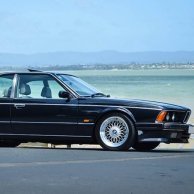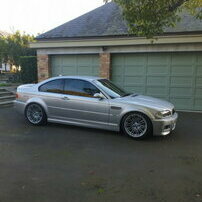I’ve had a few requests to post some information and photos on my E36 ‘two litre’ Touring Car so hope this may be of interest.
This BMW is a factory touring car, built by BMW Team Bigazzi, who were one of the three BMW factory-backed teams contesting the German (and other) Touring Car Championships in the mid nineties (the other two factory backed teams were Schnitzer and Isert).
There is a reasonably good write-up on the Supertouring era on wikipedia
http://en.wikipedia.org/wiki/Supertouring for those that are interested but essentially the two litre supertourers became the standard racecar for most national championship series not just in Europe, but around the world including NZ and Australia (the Diet Coke cars in Australia were built to the same spec, some of them sourced ex Europe after running a season there). They won championships in most national series including the BTCC, Germany, Italian series, Japan as well as the 24hour of Spa every year from 1994 through 1998. (BMW had tremendous success in this race, also winning it with the Group A M3 in 1987, 1988, 1990 & 1992 and before that in the Group A 635 in 1983, 1985 & 1986).
The early nineties saw BMW using the S14 engine that was well proven in the Group A M3, but this was essentially sleeved back from the 2.3 or 2.5L that ran in the M3 to comply with the new FIA regulations. In 2L configuration they deliver about 280bhp and limited (by the class rules) to 8,500rpm. The car has a dry weight of 1025kg, also as specified by the Supertouring (Class 2) regulations and steel rollcage to not only provide protection but also increase torsional strength to seven times that of the standard production model.
In 1995 BMW changed to the S42 engine, so this car is the last of the S14’s, which I actually prefer considering their bulletproof reputation.
1994 was also the first year that BMW introduced the Holinger 6-speed sequential gearbox (at a cost of US$32,000 each as quoted in Jeremy Walton’s book ‘Unbeatable BMW’). These sequential boxes allow you to change up with your foot flat on the gas and without using the clutch, although I tend to still use the clutch to go a bit easier on the car. The estimated cost of building each of these cars is in the order of 200,000 euro.
My car was run in the German Series so it is known as an ‘STW’ car (Super Tourenwagen) by BMW Team Bigazzi, driver Alexander Burgstaller, was then bought by Schnitzer and then sold to a South East Asian based team to campaigned it for a year. Since then it has largely been unused. My first outing was in one of the BMW Race Series meetings here in the South Island but I’ll probably use it primarily for the newly evolving Historic Touring Car class that has been developing down this way.
It is certainly a far more capable car than I am as driver, and one which I do find challenging to drive. The steering is far heavier and requires a lot more effort to get it around corners than a converted road car due to the substantial positive castor and negative camber.
Aside from the race S14 and trick sequential box it has fully adjustable front & rear sway bars and also brake bias from inside the car as well as dry sump, built in air jacks and magnesium BBS 18 inch rims on center lock hubs. Brakes are by AP Racing, featuring 6 pot front brakes with 355mm x 32mm rotors and 4 pot rear brakes with 304mm x 25mm rotors. The lowered suspension means that the roofline sits about 100mm lower than a standard production 3 series.
All important data such as oil pressure, oil temperature, water temp, gearbox temp, differential temp, tacho, speed, fuel pressure, lap times etc are monitored by the PI Research System 2 display which can all be cycled through manually, or in the event of a problem the particular issue will be immediately displayed to the driver or sent via radio link to the pit crew.
What I remember most about the first time I drove this (aside from being on slick tyres in the rain!) was that it didn’t actually feel like being inside a car. It was mechanically noisy, vibrated a lot and smelled of avgas and to me it felt like being in a machine, one which has been designed and engineered by some of the best in the world for one purpose – to go hellishly fast around corners.
Some photos follow and there’s also a clip on Youtube of the 1995 Salzburgring round, which this car can be seen in the middle of the queue at 0:42 and again at 1:55
This car is one of six BMW Supertourers in New Zealand, all based in the South Island. Two are former Diet Coke cars that ran in Australia, one is an ex Italian SuperTourismo car and the other is the 1992 BTCC winning car as driven by Tim Harvey.
 M Power changed their profile photo
M Power changed their profile photo




